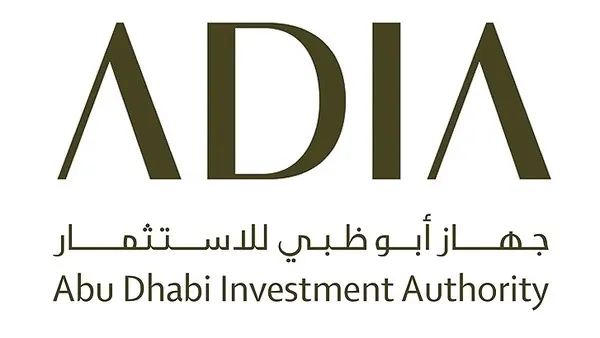Public investment funds are state-owned pools of capital that invest in a wide range of assets. Their purpose is to grow public assets for the benefit of citizens and fund specific government objectives. Public funds have become major players in global financial markets due to their sheer size and influence. This article provides an in-depth overview of public investment funds, their types, objectives, governance, trends and impact.
Types of Public Investment Funds
Globally, there are numerous significant categories of public investment funds:
Sovereign Wealth Funds
Government-owned investment funds known as “sovereign wealth funds” are created to use excess funds from the budget or foreign exchange reserves. Among the most notable instances are:
1) The Government Pension Fund Global of Norway, which is financed by oil profits. With assets of more than $1 trillion, it is the largest sovereign fund in the world.
2. The Abu Dhabi Investment Authority of the United Arab Emirates presently oversees $700 billion in assets.
3) In order to make better use of China’s foreign exchange reserves, China Investment Corporation was established in 2007. It currently oversees assets worth over $1 trillion.
Long-term investments in a variety of asset types, such as public equities, fixed income, real estate, and alternatives, are made by sovereign funds.
Public Pension Funds

The purpose of public pension funds is to assist in funding government employees’ retirement benefits. Some notable instances are as follows:
1) With assets of nearly $1.5 trillion, Japan’s Government Pension Investment Fund is the largest pension fund globally.
2) The Canada Pension Plan Investment Board oversees retirement funds valued at over $500 billion.
3) With more than $400 billion in assets, the California Public Employees’ Retirement System (CalPERS) is the biggest public pension system in the United States.
Contributions are invested by pension funds to produce returns for upcoming pension liabilities. Like sovereign funds, their holdings are diversified.
Endowments
Universities, colleges, and charitable foundations create endowments to hold donations for investment purposes. Among the largest endowments in the world are those of :
1) Harvard University, which stands at $53 billion.
2) Yale University oversees an endowment valued at $42 billion.
3) Stanford University has an endowment worth over $37 billion.
Endowments sustain the institution’s operations over the long run by producing consistent investment returns.
Other Public Investment Funds
Some other types are infrastructure funds, innovation funds, reserves stabilization funds and development funds set up by governments for specialized objectives.
Objectives and Investment Strategies
Public investment funds pursue a range of investment objectives:
- Grow assets – Primary aim is to grow the overall pool of assets under management through returns.
- Fund future liabilities – Pension funds need to fund future pension obligations. Sovereign funds may need to cover budget shortfalls.
- Economic stability – Help stabilize financial markets and support domestic economy.
- Diversification – Reduce reliance on a single industry or natural resource.
To meet these goals, public funds utilize diverse investment strategies:
- Long-term focus – Take a multi-decade investment horizon to ride out market swings.
- Broad diversification – Invest across asset classes, sectors and geographies to mitigate risk.
- Asset allocation – Balance portfolio between equities, fixed income, real estate, etc. Rebalance as needed.
- Active vs. passive management – Some active stock-picking, also broad passive index exposure.
- Alternative investments – Allocate capital to alternative assets like private equity, hedge funds and venture capital.
- Risk management – Manage financial risks through asset allocation, diversification, hedging and other techniques.
- Return targets – Funds aim for steady returns to meet spending needs and grow assets. Targets are often set annually.
- Impact investing – Some funds also consider environmental and social impact alongside returns.
Major Public Investment Funds Worldwide

Below are some of the largest public investment funds globally by assets under management:
Largest Sovereign Wealth Funds
| Fund | Country | Assets Under Management |
|---|---|---|
| Norway Government Pension Fund | Norway | $1.3 trillion |
| China Investment Corporation | China | $1.1 trillion |
| Abu Dhabi Investment Authority | UAE | $697 billion |
| Kuwait Investment Authority | Kuwait | $592 billion |
| Hong Kong Monetary Authority | Hong Kong | $535 billion |
Largest Public Pension Funds
| Fund | Country | Assets Under Management |
|---|---|---|
| Government Pension Investment Fund | Japan | $1.5 trillion |
| National Pension Service | South Korea | $660 billion |
| Federal Retirement Thrift Investment Board | USA | $650 billion |
| Canada Pension Plan Investment Board | Canada | $500 billion |
| California Public Employees’ Retirement System | USA | $400 billion |
Notable University Endowments
| University | Endowment Size |
|---|---|
| Harvard University | $53 billion |
| Yale University | $42.3 billion |
| Stanford University | $37.8 billion |
| Princeton University | $37.7 billion |
| Massachusetts Institute of Technology |

Oversight and Governance
Proper governance and transparency are crucial for public investment funds. Oversight mechanisms include:
- Governing bodies – Funds have dedicated oversight boards comprising government officials, investment experts, stakeholders.
- Regulations – Funds follow regulations on disclosure, ethical investing, risk exposure. Additional scrutiny as public entities.
- Transparency – Public reporting on asset allocation, holdings, returns, costs. Enhances accountability.
- Ethical standards – Guidelines on issues like human rights, environment, anti-corruption.
- External reviews – Independent performance reviews and audits.
Good governance ensures public funds invest responsibly in the best interest of stakeholders.
Criticisms and Concerns
Public investment funds also face criticisms on certain aspects:
- Risk exposure – Concerns about excessive risk-taking with public money.
- Lack of transparency – Insufficient disclosure to evaluate investments.
- Questionable investments – Investing in ethically dubious companies or countries.
- Motivations – Pursing nationalist or political goals versus purely financial motives.
To address these concerns, funds need robust governance, transparency and accountability mechanisms. Investments should align with national interests and ethics.
Benefits and Impact
Despite some criticisms, public investment funds provide significant benefits:
- Financial market stabilization – Their long-term investments provide stability and liquidity.
- Funding public services – Returns generated are used to finance public pensions, healthcare, infrastructure.
- Infrastructure development – Direct investments in domestic infrastructure and real estate.
- Supporting innovation – Investments in venture capital, technology and startups.
- Generating returns – Funds earn annual returns of 5-10% on average to support their policy goals.
- Economic diversification – Reduces dependence on a single export commodity and vulnerability to price swings.
Some examples demonstrating the positive impact:
- Norway’s oil fund has helped the country build up long-term savings and successfully transition away from oil dependence.
- Singapore’s sovereign funds have catalyzed the development of the country as a financial hub.
- Alaska’s oil revenue fund pays annual dividends to residents to share oil wealth.
Overall, public funds have played a vital role in enabling sustainable growth and funding public welfare globally.
Investment Trends and Future Outlook
Some current trends shaping public funds’ investment approach include:
- Alternative investments – Increasing allocations to private equity, real estate, hedge funds, infrastructure.
- Sustainable investing – Factor in environmental and social considerations, pursue ESG goals.
- Tech-enabled investing – Use big data, AI/ML, fintech to enhance decision-making.
- Collaborations – Partner with peers on co-investments and knowledge sharing.
Public fund assets under management are forecasted to grow substantially in the coming decade driven by:
- Sovereign funds in emerging markets
- Rapid growth in Asia-Pacific pension assets
- Rising endowments and foundations globally
Key opportunities and challenges for public funds include:
- Expanding into new alternative assets like crypto, green investments.
- Capturing higher returns from private markets.
- Managing demographic shifts and pension obligations.
- Enhancing governance and transparency standards.
- Investing more in domestic priorities like infrastructure.
Frequently Asked Questions
What are the largest public investment funds globally?
The largest are Norway’s Government Pension Fund, China Investment Corporation, Abu Dhabi Investment Authority, Japan’s Government Pension Investment Fund, and Canada Pension Plan Investment Board. Each manages over $500 billion in assets.
What types of assets do public funds invest in?
Most public funds invest across a diversified portfolio including public stocks and bonds, real estate, infrastructure, private equity, hedge funds, commodities, and cash equivalents.
What is the difference between a sovereign wealth fund and a pension fund?
Sovereign wealth funds are funded by government budget surpluses and foreign reserves while pension funds draw money from retirement contributions to fund future pension obligations.
Do public investment funds generate good investment returns?
Yes, most major public funds generate steady annual returns in the 5-10% range over the long-term, outpacing average market returns.
What are common objectives and investment strategies of these funds?
Typical objectives are to grow assets, fund future liabilities, and promote economic stability. Investment strategies focus on broad diversification, long-term horizon, active risk management.
Conclusion
In summary, public investment funds are playing an increasingly prominent role in global finance due to their massive size and influence. While they face criticisms on governance and transparency, public funds create substantial benefits for national economies, public welfare and sustainable growth. With trillions in assets under management, their investment choices impact markets worldwide. Public funds are poised for further expansion aided by alternative investments, technology and new portfolio approaches. But improved oversight and alignment with public interest is vital for their continued success.
References
[1] Sovereign Wealth Fund Rankings – Sovereign Wealth Fund Institute [2] Public Pension Fund Rankings – Wills Towers Watson [3] Endowment Report – National Association of College and University Business Officers [4] Sovereign Wealth Funds – Sovereign Wealth Fund Policy Brief, IMF [5] Public Pension Fund Management – OECD [6] The Rise of Public Investment Funds – Harvard Law School Forum on Corporate Governance


